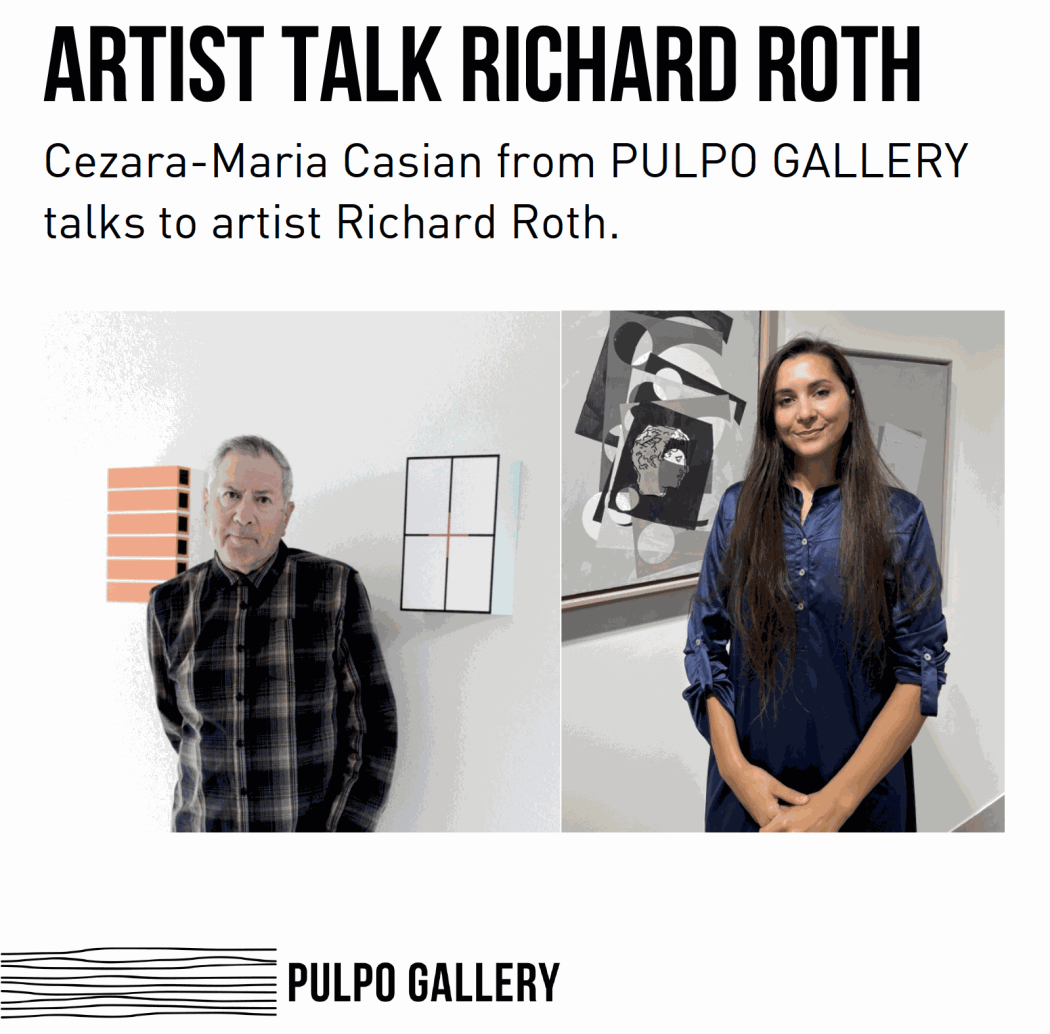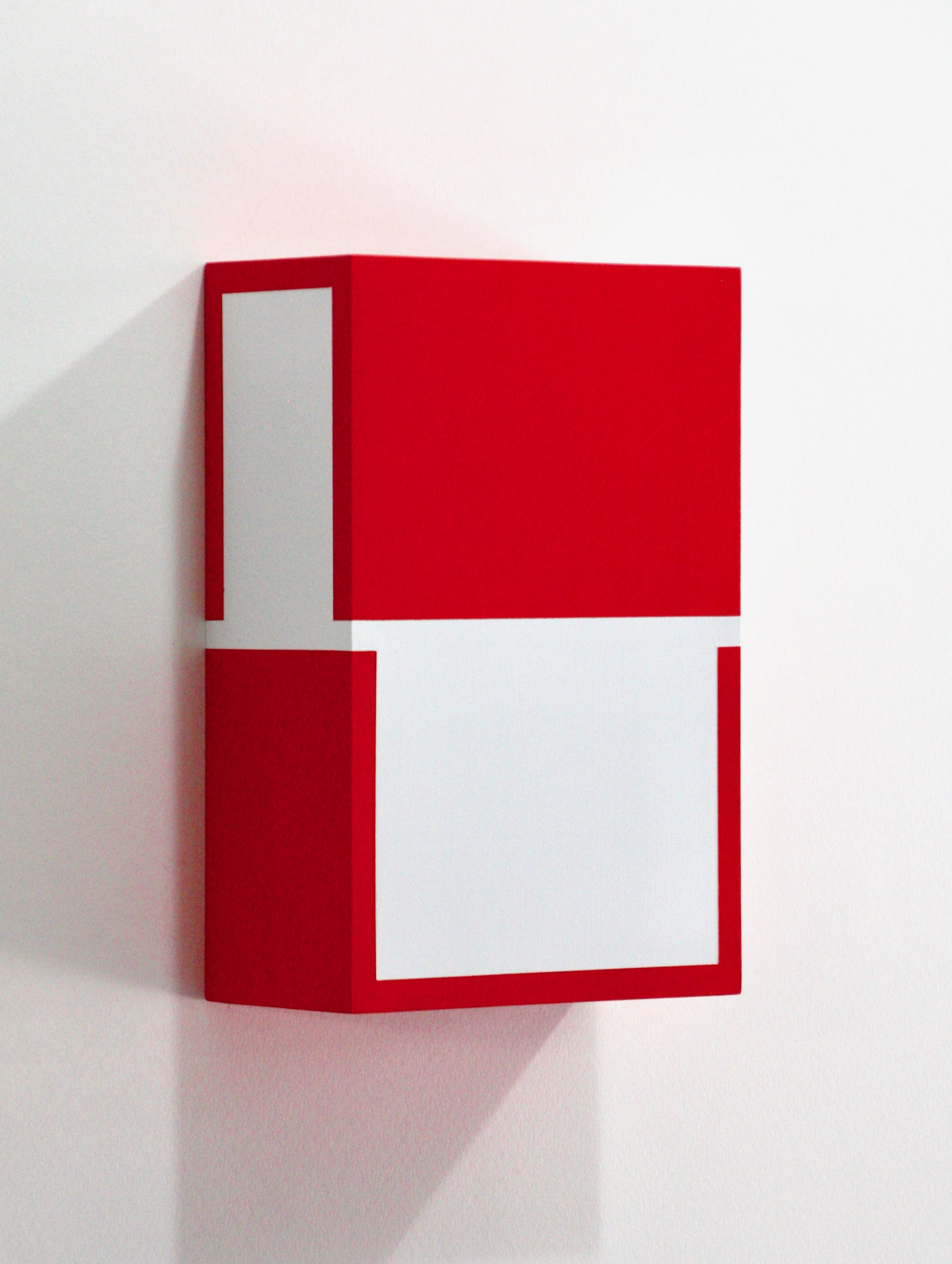
The artist Richard Roth talks about his 3D paintings, source of inspiration and the non-existing formalism within his works.
Can your works be defined as paintings that take possession of the sculpture and its principles? There is a certain battle within your paintings between the flat and the 3D.
Yes, I like that, “paintings that take possession of the sculpture and its principles.” Sometimes there’s a battle between the surface and the 3D form, sometimes a love affair, but the interaction between the dimensional panel and the applied paint is always at the heart of what the work is about. The interplay’s the thing!
Your paintings are like an invitation for the viewer to visually play with the surface and to discover a paradoxical static movement of the color layers.
Yes, the paintings demand the participation of the viewer. The viewer is required to move around the work. The paintings cannot be fully understood without this involvement. I like the way critic and curator, David Pagel, has recently described these aspects of my dimensional paintings:
“Playfulness—and the realities it generates—also animate Roth’s boxy paintings…his crisply delineated compositions make you wonder what you’re looking at: a painting? five separate paintings, each facing a different direction? a single surface wrapped around an invisible armature? the lovechild of a painting by Mondrian and a set of Lego building blocks? a smartly configured diagram that has been streamlined and stylized and inflated, so that it has become a three-dimensional chunk of impossible-to-name ambiguity? a wall-mounted sculpture? part of the architecture? a solid volume whose exterior shapes seem to go all the way through, in a quasi-geological fashion, forming single-colored bands, bars, and zig-zags? an impenetrable mystery whose surface is adorned with geometric patterns that dance off on their own, free from the restrictions of three-dimensional reality and picking up speed when they cut around the corners of the objects they animate? …Roth’s seriously whimsical works form wholes that are greater than the sum of their parts. Their synergies generate viewer participation: Your body has to move—left and right, up and down, back and forth—to even begin to see what’s in front of you. And your mind has to move a lot more fluidly and flexibly and multi-directionally if you’re going to come to terms with the confounding complexity of Roth’s deviously generous works." - David Pagel, from his essay on Chromatic, a group exhibition at the Bentley Gallery, Phoenix 2021.
In your statement, you say “Form, yes. Formalism, no”. Can you please explain the difficulty behind using an autonomous form as a medium and paint it in a such elaborate way, that it loses its primordial independent status?
Though I love form and structure in painting, I don’t consider myself a modernist strictly concerned with the purity of form. I feel naturally aligned with more playful postmodern attitudes. My painting doesn’t want to go formal; it wants to dress down.
At present, painting for me is like returning home. I painted for many years, then for approximately ten years my practice became more conceptual – creating collections of contemporary material culture. I returned to painting in 2006 with a renewed and revitalized interest, fueled by conceptualism and informed by postmodern attitudes.
“Generally, art wavers between being closer to a book or closer to a rug – more conceptual or more decorative. Our work is somewhere in between. We try to make conceptual rugs.” - Vitaly Komar, on the work of Komar and Melamid.
My new paintings are, emphatically, “conceptual rugs.”
What about your source of inspiration? Based on what criteria do you choose your motifs?
My source of inspiration? Everything, really! Since I began working on the 3D polychrome paintings, I realized that the entire world was 3D-form combined with a surface of color/pattern. Nature, the built world, design, clothing—everything is 3D polychrome!
I painted for many years beginning around 1969, then in 1993 my practice became more conceptual—I created collections of contemporary material culture for more than ten years. At the time, I expected too much of painting; felt it could never live up to what I needed it to be. My practice steered around painting. I love custom cars, fashion, and the culinary arts, but (ironically) in 1993 was embarrassed by the pretentiousness of my own culture—painting. It wasn’t until I could see painting as just another subculture, not as the culture, not as high culture, that I could re-enter it with full enthusiasm and without cynicism. I returned to painting in 2005 with a renewed and revitalized interest, fueled by conceptualism and informed by postmodern attitudes. Now, painting for me is like returning home.
I begin the small 3D polychrome paintings by working on panels that are identical in size and shape to the final paintings; these are prototypes of paintings. I develop ideas as quickly as possible, and the paintings change repeatedly. I often use colored tape to alter forms, whatever’s fast—things get messy, and I usually just paint one side and the front, just enough for me to understand the painting in space. I follow ideas as they appear, most forms get painted over, but it’s a great day when I’m totally surprised by where the painting has taken me. I photograph every stage in the process and have quite a large archive of the work in various stages, configurations I don’t yet fully understand. When I “find the painting,” when it’s right, I repaint it carefully on a new panel. I don’t love this final part of the process—this re-fabrication—but I believe it is necessary for the work to be read clearly and without any kind of nostalgic patina. The first step of the process is the “party,” the second step is “what the paintings demand.”
Over the years I have vacillated between the force fields of Mondrian and Duchamp, closer to one sometimes, closer to the other sometimes. Now I want to be fearlessly retinal!
Your works not only show accurate geometrical forms, but also the size and dimensions (12 x 8 x 4 in.) are creating a perfect congruence with the painting itself.
When I first began making the box-like paintings, I was immediately excited but thought, "They are so small, so reductive, I will make five and run out of options." What resulted was quite the opposite -- every new painting suggested a dozen new avenues. My self-imposed limits released a flood of new and unfolding ideas.
Despite their diminutive stature and stark vocabulary, these paintings (anti-heroic abstraction that flirts with popular culture) can be playful – some are pop-like, some utilize illusion. They claim object status (as opposed to window status) enabling them to tap into the expansive 3-D polychrome universe – product and package design, nature, architecture, popular culture, custom cars, and fashion.
The paintings’ box-like proportions allow a wide range of new issues to enrich my practice and its conversation with the legacy of modernism.
This Stanley Fish quotation from How to Write a Sentence, also says a lot about how I’ve come to understand my self-imposed boundaries:
“A famous sonnet by William Wordsworth begins, ‘Nuns fret not their convent’s narrow room, / and hermits are contented with their cells; / and students with their pensive citadels.’ Wordsworth’s point is that what nuns, hermits, and students do is facilitated rather than hindered by the confines of the formal structures they inhabit; because those structures constrain freedom (they remove, says Wordsworth, ‘the weight of too much liberty’), they enable movements in a defined space…. That is why Wordsworth reports himself happy ‘to be bound / Within the Sonnet’s scanty plot of ground.’ It is a scanty plot because it is bounded, and because it is bounded, it can be the generator of boundless meanings.”

Richard Roth, Testa Rosa 3, 2021.
by Cezara-Maria Casian

